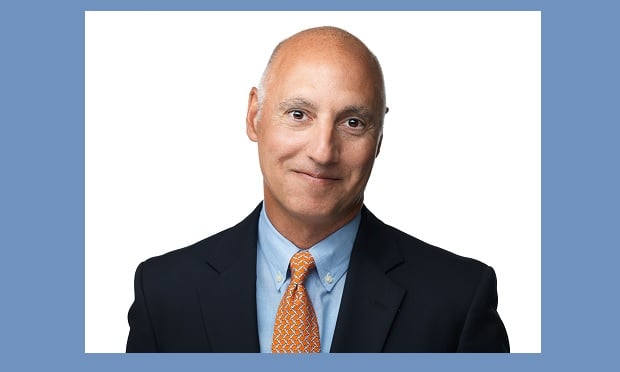NU Online News Service, May 20, 2:16 p.m.EDT
|Captives in Vermont will enjoy greater protection of theirassets now that a bill has been passed by the state legislaturethat will allow for the separation of risk within a captivecell.
|Legislation passed by the 2011 session of the Vermontlegislature and signed into law by Governor Peter Shumlin expandsVermont's captive laws. The bill allows cells within asponsored-cell captive to be formed as incorporated protectedcells. This means captives will not have to worry about cominglingassets and they can separate risks.
|The bill was signed into law before a group of industrysupporters on May 11.
|“This bill is testimony to our commitment to keep pace with thechanging needs of this industry,” says Shumlin. “I commendthe legislature for their hard work and commitment to keepingVermont 'the gold standard' for captive domiciles.”
|Another change in the new captive-insurance law creates greaterflexibility within cell structures on business written by asponsored captive and on who can own a sponsored captive.
|David Provost, deputy commissioner of Vermont's CaptiveInsurance Division tells NU Online News Service that the option toincorporate cells “was something that potential sponsors and cellowners had requested. Since our structure didn't allowincorporated cells, some business that would have consideredVermont as a domicile was forced to go elsewhere. Even thoughincorporating the cell may add some extra steps and somecomplications, I saw no material difference from a regulatoryperspective, so we supported the change.”
|While the intent is to give companies wishing to use this typeof structure the ability to domicile in Vermont, he notes that somepotential cell owners “have expressed concern that the contractualcell structure has not been tested, for that matter neither has theincorporated cell structure, but there is a mountain of corporatelaw out there that upholds the strength of the corporation itself,so an incorporated cell has that to rely on.”
|He adds, however, “We made it clear in the law that theprovision for an incorporated cell in no way weakens the strengthof a contractual cell. There are many users who are quitesatisfied with the current cell legislation, this is icing on thecake.”
|The ICC, he explains, comes with “all the benefits of being aVermont captive: a developed infrastructure, dedicated captiveinsurance division, and supportive legislative and executivebranches.”
|Provost explains that the changes to allow different sponsorswill open the door to organizations that might not have previouslyqualified, but “clearly have the expertise to be a sponsor, such asmajor insurance brokers. Although our existing statuteallowed for anyone the commissioner approved as an exception, itnow allows anyone we approve as the rule, and spells out criteriafor us to consider.”
|Dan Towle, director of financial services, tells NU, “Businessis booming. We've already had a number of meetings on incorporatedprotected cells.”
|He adds, “A number of companies setting up sponsored captivesand looking to have protected cells—whether they be incorporated ornot—are doing it with related entities or with customers, and theywant to do it in a secure environment. Vermont keeps popping uphigh on the list for that.”
|Vermont currently has 18 sponsored-cell captives with more than100 individual cells.
|The domicile says is off to its strongest start in years with nine captives licensed so far andfive applications in progress. Vermont licensed seven new captivesin the first quarter of 2011, according to the State Department ofBanking, Insurance, Securities and Health Care Administration(BISHCA).
|The state is the largest captive-insurance domicile in the U.S.and the third largest in the world, with $25 billion in grosswritten premium in 2010. Vermont also is home to captives formed by42 of the companies that make up the Fortune 100. And 18 of thecompanies that make up the Dow 30 have Vermont captives.
|The bill also makes permanent the elimination of the first-yearminimum tax of $7,500 for newly licensed captives.
|Richard Smith, president of the Vermont Captive InsuranceAssociation (VCIA), notes, “It was a way for the legislatureand governor to say thank you to an industry that has been sobeneficial to Vermont.”
|The VCIA was a strong supporter of this legislation and was apartner with the state in its passage.
|After a strong 2010 with the licensing of its 900th captiveinsurer, the State of Vermont enacted these changes to thecaptive-insurance law in the state legislature as part of itsannual enhancements to its captive statute, BISHCA says.
Want to continue reading?
Become a Free PropertyCasualty360 Digital Reader
Your access to unlimited PropertyCasualty360 content isn’t changing.
Once you are an ALM digital member, you’ll receive:
- All PropertyCasualty360.com news coverage, best practices, and in-depth analysis.
- Educational webcasts, resources from industry leaders, and informative newsletters.
- Other award-winning websites including BenefitsPRO.com and ThinkAdvisor.com.
Already have an account? Sign In
© 2024 ALM Global, LLC, All Rights Reserved. Request academic re-use from www.copyright.com. All other uses, submit a request to [email protected]. For more information visit Asset & Logo Licensing.








